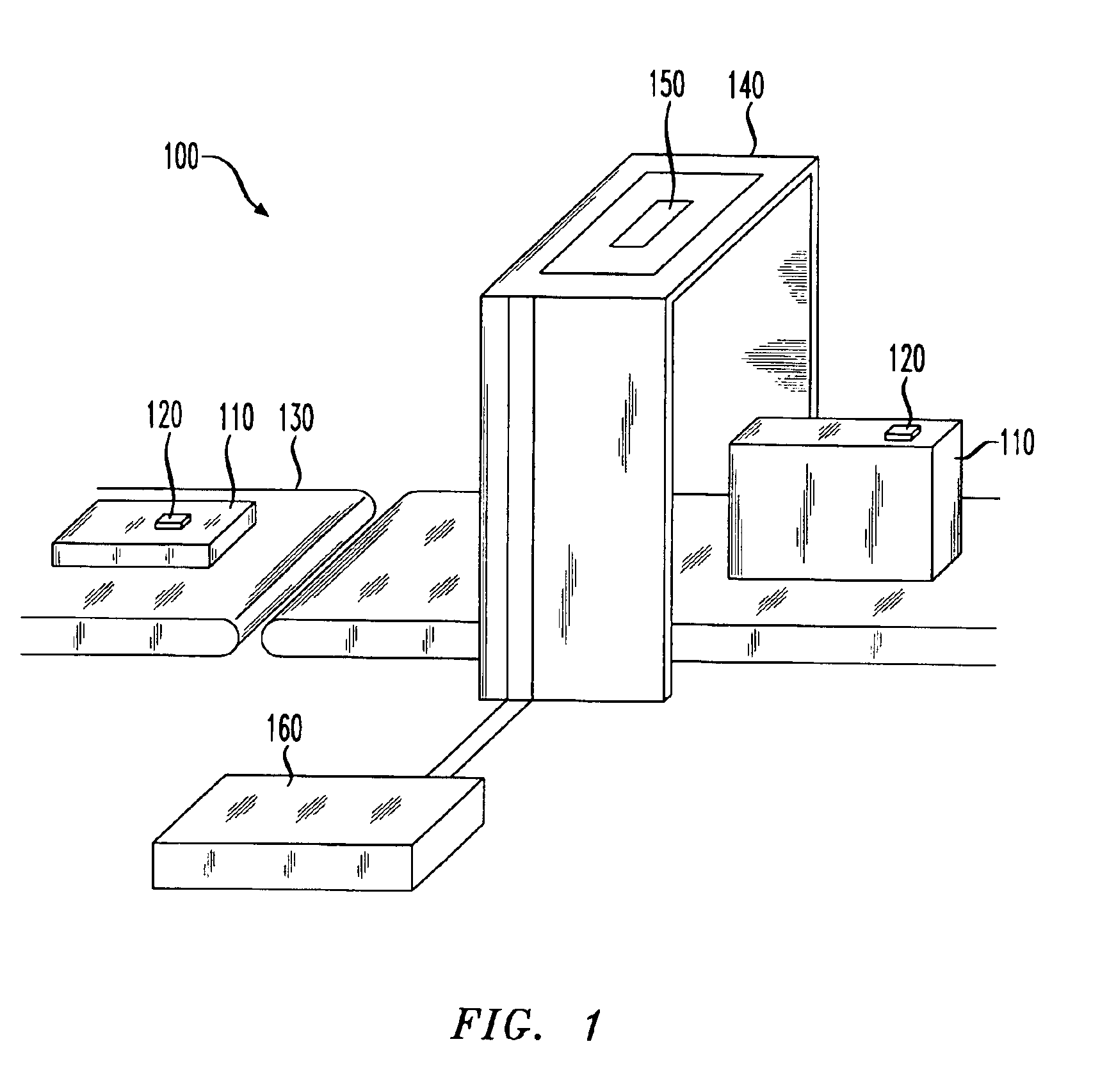Multi-layer method of accommodating code collisions from multiple surface acoustic wave identification tags
a technology of acoustic wave identification and a code collision, which is applied in the field of identification tags, can solve the problems of insufficient detection of code collisions, interference problems, and low detection efficiency, and achieve the effects of effective discrimination and isolation of signals, robust saw identification tags, and reduced code response pulses
- Summary
- Abstract
- Description
- Claims
- Application Information
AI Technical Summary
Benefits of technology
Problems solved by technology
Method used
Image
Examples
Embodiment Construction
[0020]Referring initially to FIG. 1, illustrated is a representative embodiment of a SAW identification tag system 100 for identifying articles 110 by interrogating a SAW identification tag 120 located on each article 110 and decoding the response signal. For illustration purposes, a conveyor belt 130 is being used to transport articles 120 from one location to another. This is, of course, but one of a large number of potential applications where a SAW identification tag system 100 can be usefully employed. The conveyor belt 130 has an associated SAW tag reader 140 for interrogating SAW tags 120 and identifying the articles 120 or other articles to which they are attached. An antenna 150, coupled to the SAW tag reader 140, is positioned to illuminate SAW tags 120 on the conveyor belt 130 by transmitting an interrogation pulse and detects reflected signals carrying coded responses. The coded responses are transmitted to the SAW tag reader 140 where the signal will be decoded. Associa...
PUM
 Login to View More
Login to View More Abstract
Description
Claims
Application Information
 Login to View More
Login to View More - R&D
- Intellectual Property
- Life Sciences
- Materials
- Tech Scout
- Unparalleled Data Quality
- Higher Quality Content
- 60% Fewer Hallucinations
Browse by: Latest US Patents, China's latest patents, Technical Efficacy Thesaurus, Application Domain, Technology Topic, Popular Technical Reports.
© 2025 PatSnap. All rights reserved.Legal|Privacy policy|Modern Slavery Act Transparency Statement|Sitemap|About US| Contact US: help@patsnap.com



